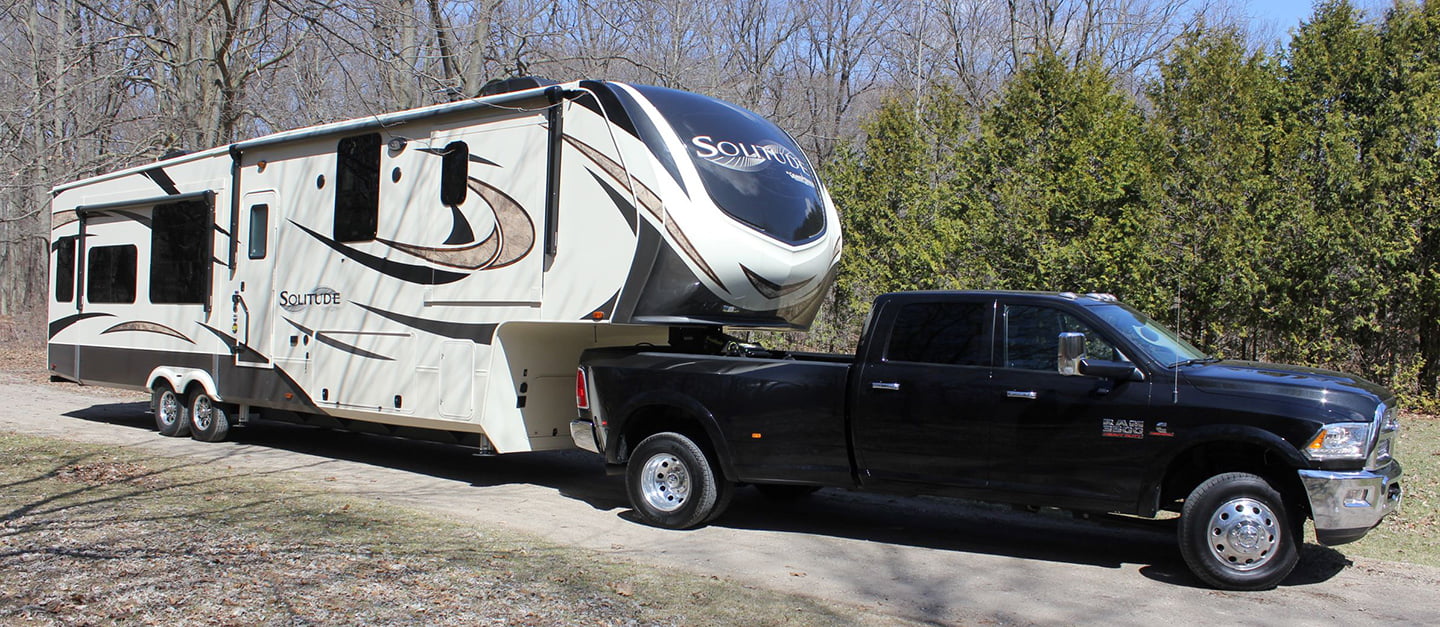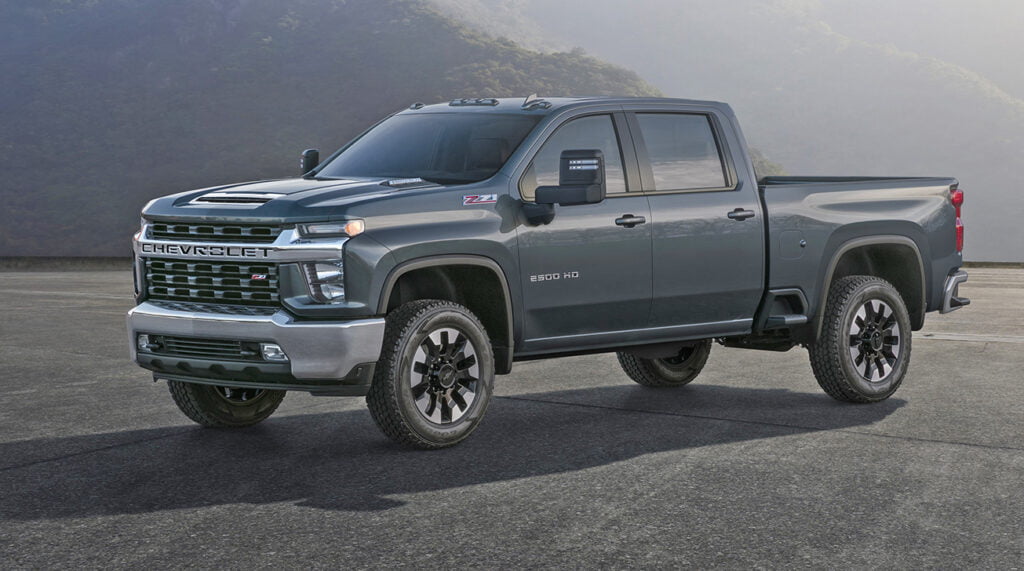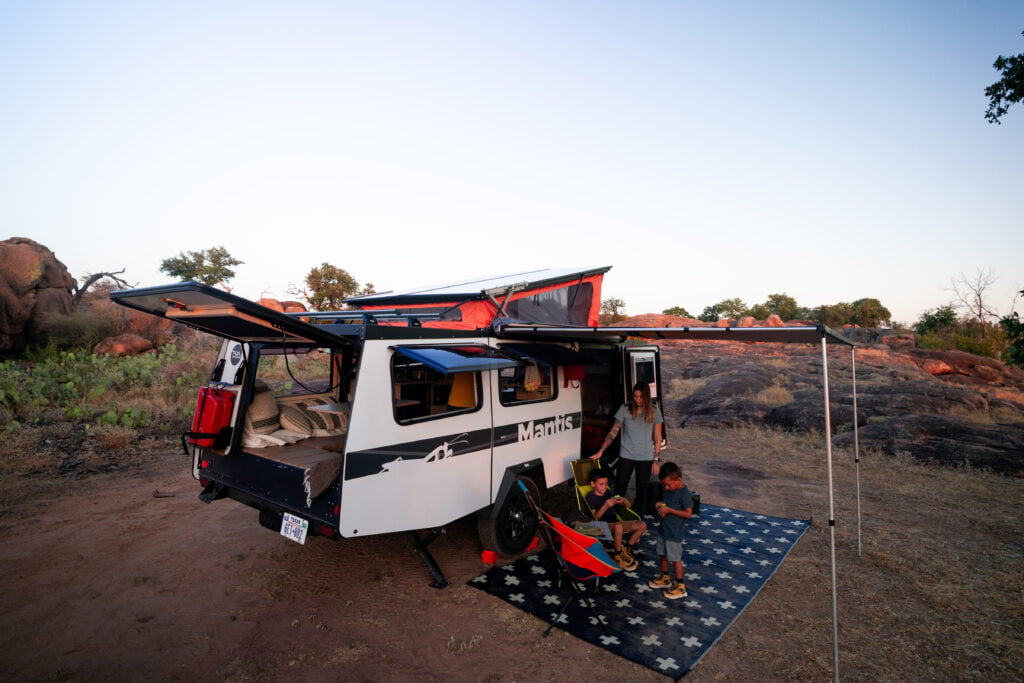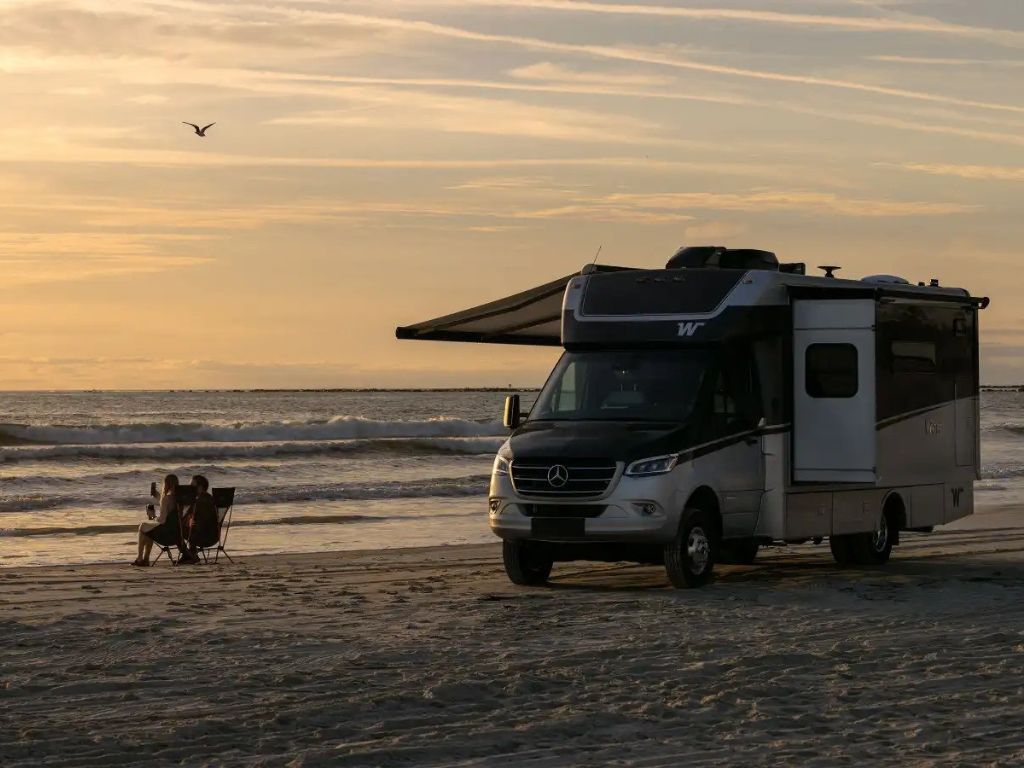The Pandemic has changed our lives this year; that’s a fact. Most would say for the worse, however I’ve found that with the restrictions and resulting slower pace of life, I have more time to invest in the details that I previously skipped over. This statement applies to everything really. Many of us have re-discovered cooking and baking; others have picked up new hobbies or ones we shelved years ago. Since March I’ve been working my way through the “little” jobs around the house that previously I just never seemed to find time for. Frankly, I can’t remember when I felt more organized.
These meandering observations bring me to my point, where RVing is concerned there are always a few things that are overlooked, neglected or simply fall into the “I can’t find time for that” category. But with COVID we do have time to look at those things that we’ve previously skipped.
Today’s topic is backing up. Let’s be honest with each other here, thousands of you are afraid to back up your rig, right? And while some practice might solve that fear, there is never time for it, isn’t that what you’ve always told yourself? Well perhaps, now, is the right time to work at it and slay this fear once and for all.
For starters (I won’t even talk about backing techniques) let’s look at the fear itself. Let me start by saying I understand this fear; and the man that taught me how to drive a tractor trailer 35 years ago knew just how to help me overcome it. Here is that story.
I was working for a TNT company as a very young dispatcher and I would routinely have these older, surly drivers tell me that because I couldn’t drive a truck, I had no right to tell them, well, anything. This frustrating situation led me to approach a driver, Leo Ryan, who I was friendly with and ask him to teach me to drive a Class A. I started by staying after work and driving in the company yard. Then Leo took me out to empty parking lots in suburban areas at night. All this made sense to me, it was safe and stress free. I did this with Leo four nights in a row, but the fifth night Leo directed me onto the highway told me we were going into downtown Toronto. Talk about instant fear! I was hauling a 40-foot trailer and it was a summer Friday night at 6pm. I thought he was nuts, but he insisted and so, off we went. When he had me exit the Gardiner Expressway at Jarvis Street, I was sure he was crazy and I started to sweat.
For the next hour I drove all through downtown, sitting on the edge of the seat with my heart racing. Traffic was horrible; cars swerved around me, horns were blaring; drivers cut me off and I could hear them cursing me at every light, but the single most frightening part of the drive was the pedestrian traffic. At every light they’d walk so close to the truck I couldn’t see them. In my mirrors I could even see some people ducking under the trailer! They swarmed everywhere and I was terrified of killing someone if I moved. I missed several green lights as the J-walkers continued to swirl past my bumper. Finally, Leo gently said “we have to move Howard. Go, just don’t hurry.”
My horror-filled road test culminated with Leo asking me to back into a street-side loading dock off Richmond Street. For those unfamiliar with Richmond Street in downtown Toronto, it’s a four-lane, one-way-only, main westbound thoroughfare that has to be blocked to accomplish what Leo asked me to do. I put on my four-way flashers, blew my horn and pulled across all four lanes diagonally and then slowly backed up to the angled street side dock.
Out my driver’s side window I could see hundreds of angry rush-hour motorists stopping and waiting. They honked, and silently screamed in their cars, no doubt wishing me a gruesome death. Leo, sat quietly in the jump seat and as I struggled to back up he calmly repeated “don’t hurry”.
Through-out that nerve-racking inner-city drive Leo kept saying just that one thing to me over and over “don’t hurry”.
It wasn’t until months later that I realized that he knew that my driving wasn’t the danger, the real danger was that as I became more and more nervous, I’d naturally start to hurry – and that is when accidents happen. So, as I’d start freaking about the pedestrians, the lights changing and the cars piling up, he would quietly say “don’t hurry” and I’d force myself to slow down, check everything twice and proceed at a snail’s pace. Yes, a lot of people were momentarily inconvenienced by my ineptness (and at that point I really was a beginner) but as we drove back to Brampton later that night, I was relieved that I hadn’t hit anything. I was safe, every car, pedestrian and building I had passed that afternoon was unscathed unhurt and undamaged. It was then that the “fear” started to fade. I realized that driving and backing up safely trumped the fear of holding someone up or looking inept in front of strangers.
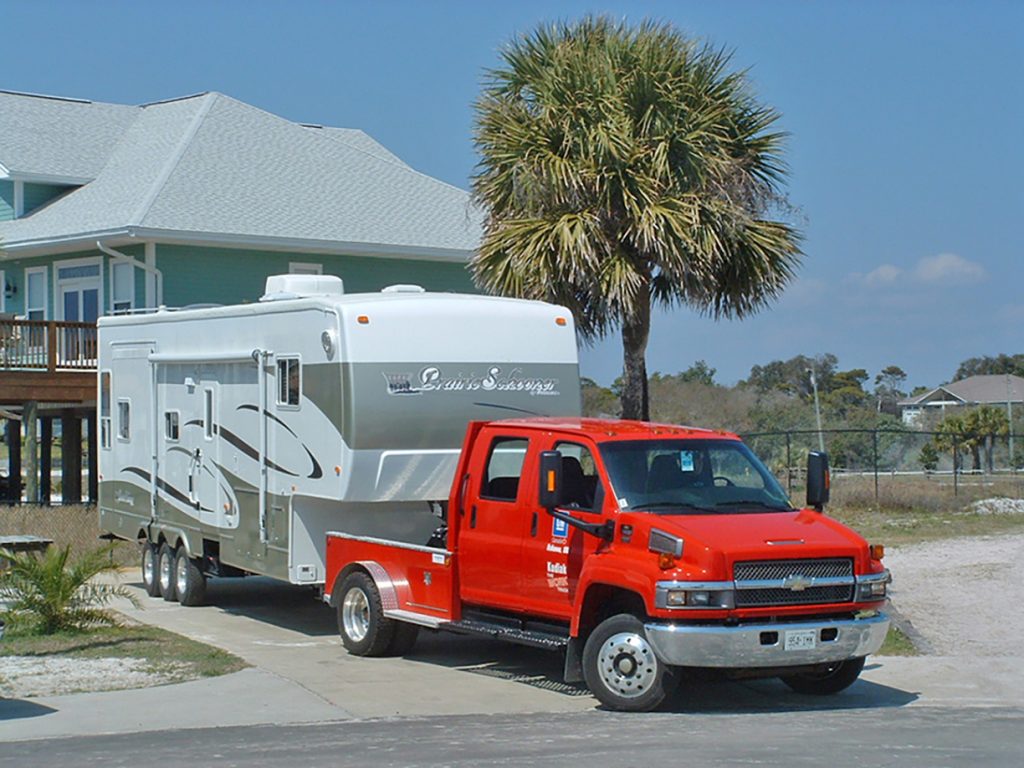
Repeating the simple sentence “don’t hurry” can do that for you as well. It’s not easy at first, but if you can follow just that one rule, you’ll almost certainly never have a problem driving your RV, backwards or forwards.
There of course is one other benefit to “don’t hurry”, it builds driver’s confidence. Yes, it takes time, but perhaps now is the time to do it. Get out there and practice, and one day you’ll suddenly realize that there isn’t anywhere on this planet that you wouldn’t drive your rig. I swear it works. That one statement will change how you drive if you resolve to live by it, just keep telling yourself that by not hurrying you are safeguarding your possessions, your life and everyone else’s around you.
Now past the inspirational story, I do have a few practical tips on backing up which you may or may not already follow but are well worth repeating.
- When backing up always do it from the driver’s side only. Never back in using only the passenger side mirror – it’s dangerous. Sometimes being able to use the driver’s side requires going around the block to get the rig facing the right way. It’s worth the extra time it takes.
- Use your four-way flashers every time you back up – it’s a courtesy signalling your intentions to those around you.
- Before you back into any space, stop, exit the vehicle, walk to the back of the trailer and examine the site you are about to park in. First, will the trailer fit? Pull out a tape measure if you have too. Then check the ground for debris, holes, rocks etc. Look up as well (know how tall your rig is) and check for wires, branches, or other obstructions. Then pick one “thing” you can clearly see in your mirror that will indicate to you when you are “in”.
- Once you are moving, if you’ve surveyed the site properly, you will know for sure that the passenger side of your rig is going to fit on the site. Why is this important? Because now your only concern is the driver’s side. You now only have to watch one mirror and if you stay close to your side, the passenger side takes care of itself.
- If you use a spotter, arrange with him/her to stand at the rear of the unit, to one side, so they are in full view in your driver’s mirror. They should signal all their directions with hand signals only (make up your own). No yelling directions! It’s silly and pointless and causes fights. Hand signals only…trust me.
- But, spotters aside, as the driver you are ultimately responsible for everything your rig is doing. So, if you have a doubt, stop, exit the cab, and check the back of the rig before continuing to back in, if you find you have to do it multiple times, that’s not a problem. If you park safely, then what ever you did was exactly right. Remember “never hurry”.
- It’s been a long time, but I have to say, once more, Thanks Leo!

